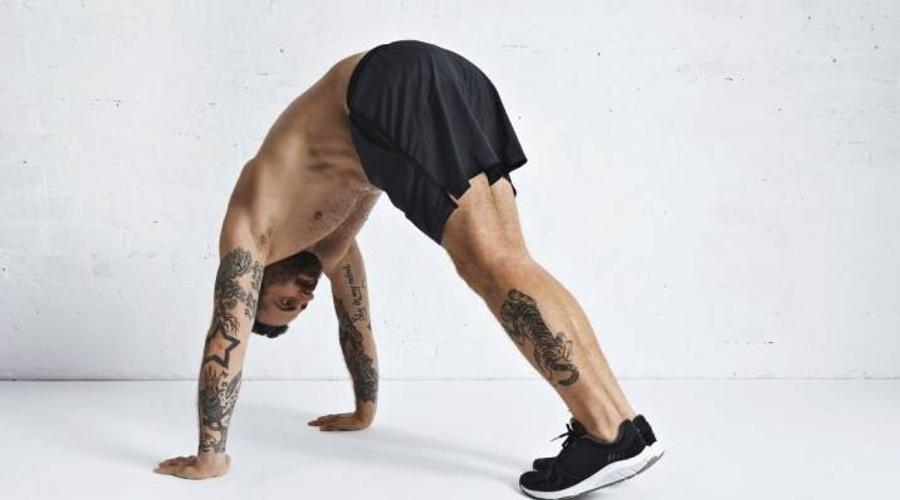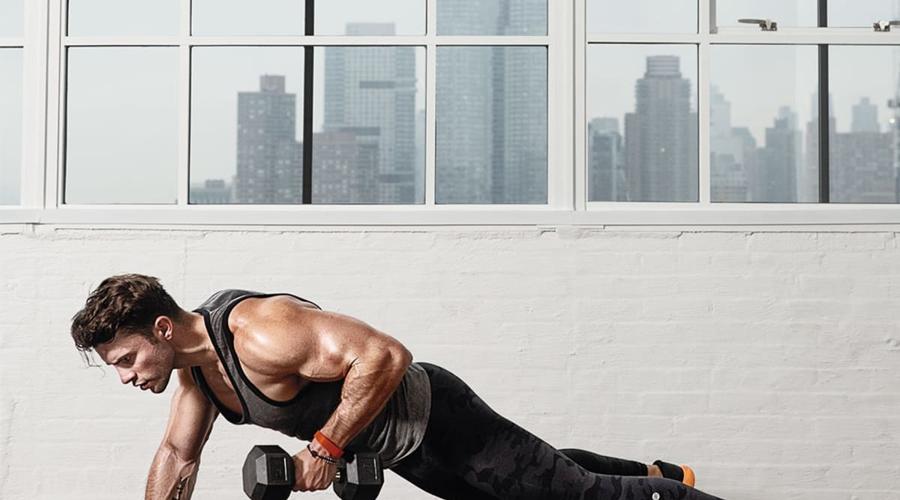Are you tired of feeling weak or experiencing discomfort in your shoulders? It’s time to take matters into your own hands and build strength right from the comfort of your home. In this blog post, we will explore a variety of effective shoulder exercises that will help you strengthen and tone your shoulders, ultimately enhancing your overall upper body strength and posture.
Our shoulders play a crucial role in our everyday movements, from lifting objects to reaching overhead. However, many of us neglect to give them the attention they deserve. By incorporating targeted exercises into your routine, you can not only alleviate pain and tension but also develop sculpted, well-defined shoulders that exude confidence.
Read here also buy trenbolone online
Throughout this post, we will guide you through a range of home shoulder exercises, focusing on different muscle groups and offering modifications for various fitness levels. Whether you’re a beginner or a seasoned fitness enthusiast, there will be exercises suited to your needs. Get ready to unlock the power and potential of your shoulders as we delve into the world of home shoulder exercises. Are you ready to transform your upper body strength and achieve the toned shoulders you’ve always desired? Let’s get started!
Click here to discover effective home shoulder exercises!
Contents
Understanding Shoulder Anatomy
The shoulder is a complex joint that consists of various muscles and structures working together to provide mobility and stability. To effectively engage in home shoulder exercises, it’s essential to understand the key components of shoulder anatomy. The shoulder muscles can be broadly categorized into the deltoid muscle, which covers the outer part of the shoulder, the rotator cuff muscles, responsible for stabilizing the joint, and the trapezius muscle, which extends from the neck and upper back to the shoulder blades. Each of these muscles plays a vital role in shoulder movement and strength.
In addition to its muscular components, the shoulder joint’s functions encompass a wide range of motion, allowing us to perform tasks such as lifting, reaching, and throwing. The shoulder’s mobility is facilitated by the shallow socket of the shoulder blade, enabling a greater degree of movement but also making it susceptible to instability and injury. Understanding the functions of the shoulder can provide valuable insights into the importance of maintaining its strength and stability through targeted exercises. By addressing common shoulder issues like impingement or rotator cuff problems through exercise, we can effectively improve shoulder health and prevent future complications.

Preparing for Home Shoulder Exercises
Before diving into home shoulder exercises, it’s crucial to adequately prepare your body to ensure a safe and effective workout. This section will outline essential steps to take in order to warm up properly and minimize the risk of injury during your shoulder exercise routine.
Warm-up exercises for shoulder mobility
To enhance blood flow, increase flexibility, and prepare the shoulder muscles for exercise, incorporating a warm-up routine is essential. This may involve dynamic stretches and movements that target the shoulders, such as arm circles, shoulder rolls, and shoulder blade squeezes. These exercises help loosen up the joints, improve the range of motion, and activate the muscles surrounding the shoulder complex.
Importance of proper form and technique
Performing shoulder exercises with correct form and technique is paramount to maximize their effectiveness while reducing the risk of injury. It’s crucial to maintain good posture, engage the appropriate muscles, and avoid excessive strain on the joints. Understanding the proper alignment and execution of each exercise is key. Consider seeking guidance from a fitness professional, watching instructional videos, or using exercise resources that provide detailed instructions on form and technique.
Safety precautions and injury prevention tips
When engaging in home shoulder exercises, it’s vital to prioritize safety to prevent potential injuries. Start with lighter weights or resistance bands if you’re a beginner and gradually increase the intensity as your strength improves. Avoid overloading the shoulders beyond your capacity and listen to your body’s signals of discomfort or pain. Incorporating rest days into your exercise routine allows your muscles to recover and reduce the risk of overuse injuries. Additionally, maintaining proper nutrition, staying hydrated, and getting enough sleep contribute to overall shoulder health and recovery.
Click here and get started with home shoulder exercises today!
Home Shoulder Exercises – Equipment Required
Below is a comparative table of home shoulder exercises, categorized by the equipment required:
| Exercise | Equipment Required | Description |
|---|---|---|
| Shoulder Press | Dumbbells | Sit or stand, hold dumbbells at shoulder level, press up |
| Lateral Raises | Dumbbells | Stand with dumbbells at sides, raise arms to shoulder level |
| Front Raises | Dumbbells | Stand with dumbbells in front, raise arms to shoulder level |
| Bent-Over Raises | Dumbbells | Bend forward, raise dumbbells to sides, squeeze shoulder blades |
| Push-Ups | None | Start in a plank position, lower and raise body |
| Pike Push-Ups | None | Start in a downward dog position, lower and raise body |
| Plank Shoulder Taps | None | Start in a plank position, tap opposite hand to shoulder |
| Wall Slides | Wall | Stand against a wall, slide arms up and down |
| Resistance Band Pulls | Resistance Band | Stand on resistance band, pull handles towards shoulders |
| Arm Circles | None | Extend arms to sides, make small or large circles |
Effective Home Shoulder Exercises
Effective home shoulder exercises are essential for maintaining shoulder strength, stability, and overall upper body function. The shoulder complex consists of various muscles and structures, and targeting different sections can help address specific needs and prevent injuries.
Deltoid Exercises
The deltoid muscles are responsible for the overall appearance and strength of the shoulder. These muscles consist of three heads: anterior (front), middle, and posterior (rear). Including deltoid exercises in your home workout routine can help develop well-rounded shoulder strength and improve shoulder stability.
- Overhead Press: Stand with your feet shoulder-width apart and hold dumbbells or a barbell at shoulder level. Press the weight directly overhead, extending your arms fully. Lower the weight back to shoulder level and repeat for a set of repetitions. This exercise targets all three heads of the deltoids.
- Lateral Raises: Stand with your feet hip-width apart and hold dumbbells by your sides. Raise your arms out to the sides, keeping a slight bend in your elbows, until they reach shoulder level. Slowly lower the weights back down and repeat. This exercise primarily targets the middle deltoids.
- Front Raises: Stand with your feet hip-width apart and hold dumbbells in front of your thighs, palms facing your body. Lift the weights directly in front of you until they reach shoulder level. Slowly lower them back down and repeat. This exercise primarily targets the anterior deltoids.

Rotator Cuff Exercises
The rotator cuff is a group of muscles and tendons that stabilize the shoulder joint. Strengthening the rotator cuff is crucial for preventing injuries and improving shoulder mobility. Here are a few effective rotator cuff exercises you can perform at home:
- External Rotations: Hold a resistance band or a light dumbbell in one hand. Keep your elbow bent at a 90-degree angle and tucked into your side. Rotate your forearm outward against the resistance, keeping your elbow stationary. Slowly return to the starting position and repeat. Perform the exercise on both arms.
- Internal Rotations: Attach a resistance band to a sturdy anchor point. Stand sideways to the anchor point and hold the band with the hand farthest from the anchor. Keep your elbow bent at a 90-degree angle and tucked into your side. Rotate your forearm inward against the resistance, moving across your body. Return to the starting position and repeat. Perform the exercise on both arms.
- Prone Shoulder External Rotation: Lie face down on a bench or bed, with your arm hanging straight down towards the floor. Hold a light dumbbell in your hand. Keeping your elbow bent at 90 degrees, raise your forearm upward, externally rotating your shoulder against the resistance. Slowly lower back down and repeat. Perform the exercise on both arms.
Upper Back and Posture Exercises
The upper back plays a crucial role in maintaining good posture and shoulder stability. By strengthening the upper back muscles, you can improve posture, reduce the risk of shoulder injuries, and alleviate upper back and neck pain. Here are a few effective exercises:
- Rows: Stand with your feet shoulder-width apart and hold dumbbells or use resistance bands. Bend your knees slightly and hinge forward at the hips, keeping your back straight. Pull the weights or bands towards your torso, squeezing your shoulder blades together. Lower the weights back down and repeat.
- Reverse Flyes: Stand with your feet hip-width apart and hold dumbbells or use resistance bands. Bend your knees slightly and hinge forward at the hips. Open your arms out to the sides, lifting the weights or pulling the bands back until your shoulder blades squeeze together. Slowly lower the weights or release the bands back to the starting position and repeat.
- Superman Pose: Lie face down on a mat with your arms extended overhead and your legs straight. Lift your arms and legs off the ground simultaneously, engaging your upper back muscles. Hold this position for a few seconds, then lower your arms and legs back down to the starting position. Repeat the movement for several repetitions. The Superman pose targets the muscles in your upper back and helps improve posture by strengthening the muscles that support the spine.
Progressive Overload and Workout Progression
Progressive overload is a fundamental principle in fitness training that involves gradually increasing the demands placed on your body over time. It is a key factor in achieving consistent and meaningful progress in your workouts. By continuously challenging your muscles and gradually increasing the intensity, you can stimulate muscle growth, strength gains, and improvements in overall fitness. In this discussion, we will explore the importance of progressive overload, strategies for increasing intensity over time, and provide a sample workout progression. Understanding and implementing progressive overload techniques can help you optimize your workouts and achieve your fitness goals effectively.
More about trenbolone acetate pills
Importance of progressive overload
Progressive overload is essential because our bodies adapt to the stress placed upon them. By consistently challenging our muscles, we force them to adapt and become stronger. Without progressive overload, our bodies would plateau, and progress would stagnate. The principle of progressive overload applies to various aspects of training, including weightlifting, cardiovascular exercise, flexibility training, and even skill development.
Engaging in progressive overload not only helps build muscle and strength but also enhances other fitness components such as endurance and flexibility. It promotes improvements in cardiovascular health, bone density, and overall functional capacity. By gradually increasing the workload, you can avoid reaching a plateau and continue making progress over time.
Strategies for increasing intensity over time
There are several strategies you can employ to progressively overload your workouts and increase intensity over time:
- Increasing Resistance: Gradually increase the weight or resistance used during strength training exercises. This can be done by adding additional weight plates, using resistance bands, or progressing to more challenging exercises.
- Adding Repetitions: Increase the number of repetitions performed for each exercise. Once you can complete a set with proper form and technique, add a few more repetitions to continue challenging your muscles.
- Adjusting Sets and Rest Periods: Increase the number of sets performed for each exercise or decrease the rest periods between sets. This can increase the overall volume and intensity of your workout.
- Manipulating Tempo: Control the speed at which you perform each repetition. Slowing down the eccentric (lowering) phase of the movement or incorporating pauses can increase time under tension and make the exercise more challenging.
- Varying Exercise Selection: Introduce new exercises or variations that target the same muscle groups. This helps prevent adaptation and keeps your muscles engaged.
Sample workout progression
A sample workout progression could look like the following:
Week 1-4:
- Perform three sets of 10-12 repetitions for each exercise with a moderate weight.
- Rest for 60-90 seconds between sets.
- Focus on proper form and technique.
Week 5-8:
- Increase the weight by 5-10% for each exercise.
- Perform three to four sets of 8-10 repetitions.
- Shorten the rest periods to 45-60 seconds.
Week 9-12:
- Further increase the weight by 5-10%.
- Perform four sets of 6-8 repetitions.
- Reduce the rest periods to 30-45 seconds.
By gradually increasing the intensity and adjusting the variables over a 12-week period, you can effectively implement progressive overload and continually challenge your body.
Remember, progressive overload should be applied progressively and with caution to avoid overtraining or injury. It’s important to listen to your body, prioritize proper technique, and consult with a fitness professional if needed. With consistent application, progressive overload can lead to significant improvements in strength, muscle growth, and overall fitness.
Learn how to strengthen your shoulders at home. Click here!
Home Shoulder Exercises – Difficulty Level
Below is a comparative table of home shoulder exercises, categorized by the difficulty level:
| Exercise | Difficulty Level |
|---|---|
| Shoulder Press | Intermediate |
| Lateral Raises | Beginner |
| Front Raises | Beginner |
| Bent-Over Raises | Intermediate |
| Push-Ups | Beginner |
| Pike Push-Ups | Advanced |
| Plank Shoulder Taps | Intermediate |
| Wall Slides | Beginner |
| Resistance Band Pulls | Intermediate |
| Arm Circles | Beginner |
Additional Tips for Shoulder Health and Maintenance
In addition to incorporating effective home shoulder exercises and progressive overload into your routine, here are some additional tips for shoulder health and maintenance:
- Warm Up Properly: Prior to engaging in any shoulder exercises, it’s crucial to warm up the muscles and joints to increase blood flow and flexibility. Perform dynamic stretches and mobility exercises specific to the shoulder complex, such as arm circles, shoulder rolls, and shoulder dislocations.
- Maintain Proper Posture: Poor posture can contribute to shoulder issues. Practice good posture by keeping your shoulders back and down, aligning your ears with your shoulders, and avoiding slouching or hunching forward. Be mindful of your posture throughout the day, especially if you spend extended periods sitting or working at a desk.
- Focus on Balanced Strength: Ensure that you’re not neglecting any specific muscle groups within the shoulder complex. Balance your training by targeting all areas, including the deltoids, rotator cuff muscles, upper back, and scapular stabilizers. This helps maintain overall shoulder stability and reduces the risk of muscle imbalances.
- Listen to Your Body: Pay attention to any discomfort or pain in your shoulders. If you experience persistent pain, weakness, or limited range of motion, it’s important to consult with a healthcare professional. They can assess your condition, provide appropriate treatment or modifications, and guide you on how to safely continue exercising.
- Rest and Recovery: Give your shoulders adequate rest and recovery time between workouts. Overtraining and not allowing enough time for recovery can lead to overuse injuries and hinder progress. Incorporate rest days into your routine and consider incorporating techniques like foam rolling, stretching, and gentle mobility exercises to promote recovery.
- Avoid Overloading: While progressive overload is important, it’s crucial to progress gradually and avoid sudden increases in weight or intensity. Gradually increase the workload over time and allow your body to adapt to the demands placed on it.
- Modify Exercises as Needed: If you have a pre-existing shoulder condition or injury, it’s important to modify exercises accordingly. Consult with a healthcare professional or a qualified fitness trainer who can provide guidance on suitable modifications or alternative exercises to prevent further aggravation.
- Incorporate Mobility and Flexibility Exercises: Alongside strengthening exercises, include mobility and flexibility exercises to maintain good range of motion in your shoulders. Perform exercises such as shoulder circles, arm swings, and stretches that target the shoulder muscles and surrounding structures.
Remember, shoulder health is a combination of proper exercise, overall posture, and self-care practices. By implementing these additional tips, you can promote shoulder health, prevent injuries, and maintain optimal function in your daily activities and workouts.
Frequently Asked Questions – Home Shoulder Exercises
Q: What are some effective home shoulder exercises?
A: Some effective home shoulder exercises include shoulder presses, lateral raises, front raises, bent-over raises, push-ups, pike push-ups, plank shoulder taps, wall slides, resistance band pulls, and arm circles.
Q: Do I need any equipment for home shoulder exercises?
A: Equipment requirements vary depending on the exercise. Some exercises, such as shoulder presses, lateral raises, and bent-over raises, require dumbbells. Others, like push-ups, pike push-ups, and arm circles, don’t require any equipment.
Q: Are home shoulder exercises suitable for beginners?
A: Yes, home shoulder exercises can be suitable for beginners. Exercises like lateral raises, front raises, push-ups, wall slides, and arm circles are beginner-friendly. It’s important to start with lighter weights and gradually increase intensity as you progress.
Q: How often should I perform home shoulder exercises?
A: The frequency of home shoulder exercises depends on your fitness level and goals. As a general guideline, aim for 2-3 sessions per week, allowing a day of rest between sessions to give your muscles time to recover and grow.

